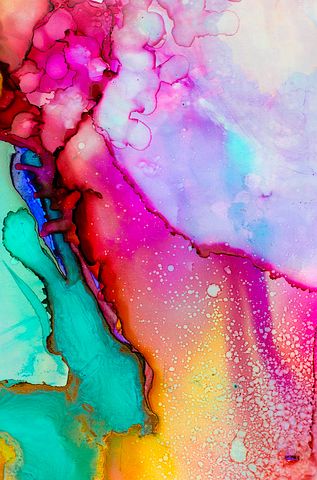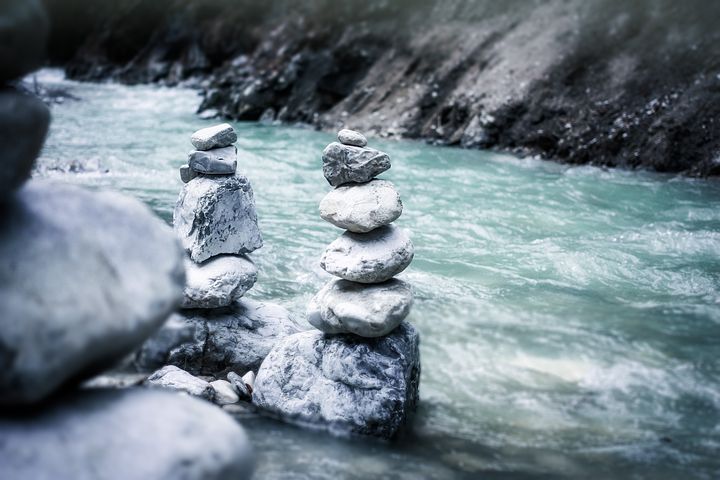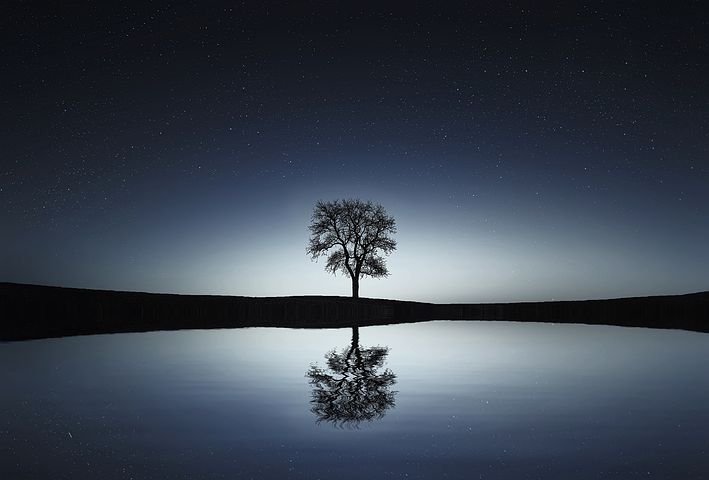Several years ago I wrote The Three Phases of Kundalini. It is one of my most popular blogs, and I occasionally get questions from people asking if several years later I would write anything differently.
The answer to this question is yes. The way I wrote about kundalini in my first book, The Spiritual Awakening Guide(ten years ago), the way I wrote about kundalini in my three phases blog, and the way I write about kundalini in my latest book, Working with Kundalini, are all different in some regards.
This does not mean that what I would seek to change anything in what I wrote. My first book would have been exactly what I needed twenty years ago, my blog fifteen years ago, and my book, Working with Kundalini, was a sort of (jokingly) exorcism– the release of the fifteen years of intensive verging on obsessive (at times) study and experiences undergoing a kundalini awakening.
What happens with kundalini awakening, or any spiritual awakening of some depth, is that who we are and what we think can drastically change. This can happen in a moment, or can happen over many years. In my case, study of kundalini has been a demanding mistress. Study of any spiritual subject is– the close you get to it, the more ineffable it is, and the more is unknown regarding it.
Spiritual awakening is like gradually becoming conscious of just how much is unknown; it is the clear realization of where the boundaries of our knowledge lie– what we do and do not know.
But with study (embodied study– meaning daily, lived experience of spirituality) the ability to describe things in simpler and simpler ways develops. Teaching does this as well. There is nothing like relating experiences to clients, students, and readers that allows for you to communicate clearly.
I would now define kundalini as consciousness. A kundalini awakening is consciousness rising. Specifically, forced consciousness rising.
I will mention that there are many different kinds of spiritual awakening. Kundalini is one kind of awakening. I would liken this to the oft-used proverbial mountain analogy. I would say that no matter what kind of spiritual awakening you have, kundalini awakening is sort of mid-mountain. But some individuals experience kundalini awakening suddenly, and others experience it after other types of awakening. Still others never climb said mountain, as climbing said mountain requires an immense amount of effort.
It is much easier to say that you have climbed a mountain than to actually climb a mountain.
Kundalini is a latent energy that we all have. Picture your spine. It has curves– our anatomical spine creates structure around our chakras. Our sacrum (the triangular bone at the end of our spine) is like a giant cup. It holds the massive potential that is kundalini.
We require this structure to contain flow, to allow for that flow to have direction and purpose. The feminine (why kundalini is sometimes is referred to as goddess energy) polarity (kundalini, the body, our genitals, the flowing, dark, intuitive, feeling principle that allows for a state of being) requires the masculine polarity (the head, ego-mind, ordering, structuring, containing and activating) structure to work properly.
In kundalini awakenings we experience the flow of the dark feminine. It meets the masculine and gradually intertwines, releasing contradiction, this vs. that, and separation. The head and the body become one, and polarities intertwine and work together.
Picture kundalini as a giant ball of energy. Really it is sort of an ocean tightly contained into a ball within our sacrum (first and second chakra). Similarly, we have energetic flows going through our entire body. Our lymphatic system and our cerebrospinal fluid (the fluid that flows through the spinal cord and bathes the brain, very important for kundalini awakenings and its final stage) for example. We associate ourselves with our meat suits but really we are sort of like fluid-filled sacs from an anatomical perspective.
Kundalini awakens and rises out of the first chakra. It’s purpose is to create a pathway through the midline, releasing the contents of our chakras (consider our chakras sort of like storehouses of emotions, traumas, conditioning, etc.) as well as breaking through several energetic knots (separate from the chakras. For more comprehensive understanding of this, see my book, Working with Kundalini).
It arises like a curl, straightening up the spine. Others utilize the symbolism of a snake. When it is fully straight (fully released from its home in the sacrum) it creates continual flow through the midline, and a fully realized state (enlightenment, self-realization).
The end result of kundalini awakening is the awakening of every cell in the body. Consider the midline to be the altar of the body, and the creator of the rest of the body (for example, our legs are a part of our first chakra, our arms a part of our heart chakra). It does this by flowing through the body and releasing anything that is not pure consciousness– basically our traumas, held emotions, beliefs, and conditioning (see my book, The Spiritual Awakening Guide, for an overview of release).
There is quite a bit of misinformation out there, so I will state that the end goal of spiritual awakening is paradoxical. It is about release and expansion– releasing identity, beliefs, and patterns that confine us. It is also about contraction and individuation– realizing fully who you are.
One leads to the other. The release of past traumas and emotions and beliefs can allow for someone to become an individual. It can take someone from endlessly seeking approval and worth and who they are reflected back to them from the outer world and internalizing all of that energy. Put more simply, discovering what we think about ourselves, what our own values are, and even what we think (free from what society, our parents, or advertising want us to think).
We also cannot have one without the other. Paradoxes like this are the “secret” if there were any regarding the spiritual path, and the difficulty with them is that they need to be experienced to be understood. Intellectualism or playing the role of being spiritual will not lead to this type of embodied understanding.
The first stage of awakening of kundalini is a cutting through ego inflation.
Many of us who are more seasoned on our spiritual paths can look back at when we began and laugh a bit at ourselves. It is common to think of ourselves as adept, enlightened, or having some type of mastery after reading a few books, meditating for a few months, doing a few rituals, etc.
This is a type of ego inflation that many of us can readily understand. I will state that ego inflation occurs even without awakening (in my book The Spiritual Awakening Guide I call it “ego awakening” but it really is false awakening. It is performative, or looking spiritual for others. There is no internal work being done, and the person never truly awakens. You can find people who have spent decades on their spiritual path who have wasted a lot of money and time stuck here).
It is typical that people, if they are having a kundalini awakening, do not make it past this first stage. Illusion is preferable to reality, and cutting through the ego, having the clarity and perspective and curiosity and humility to want to or need to experience something beyond egoic defenses and known reality to the point of actually doing the work required to move beyond this stage is incredibly rare.
Moving beyond having momentary cathartic, loud experiences to doing the daily work of questioning within, to release bonds and patterns from the self and ancestry, to question conditioning and reality, is such a hard task because it is a daily one. It is one without fireworks, and it is inner work so it cannot be shown to the outer world to prove worth. It is soul-building work, and well worth it.
In kundalini awakening, or any type of spiritual awakening, the grandiosity of self is cut through. In kundalini awakenings, this can be fairly brutal. We like to think of ourselves as separate, and special, and better than, and further along in a shorter period of time. This is all stuff to make ourselves feel worthy or appear better to the outer world.
All of this relies on separation– predicated on the belief that we need to be special to have a right to exist. It is also predicated on trauma and the protective defense mechanisms that trauma creates.
When we feel small, emotionally hurt, overwhelmed, or are purposefully denying reality (ignorance/delusion), that part of us becomes separated from the whole (it becomes disconnected from who we currently are. Put more simply, we can have lots of separated consciousness within us. Inner children, for example).
That part of us in pain feels overwhelmed and unable to deal with the pain of reality. So it develops barriers and protective mechanisms to prevent these separated aspects of ourselves from fully surfacing. It encapsulates them in beliefs of being separate, different, special, superior, further along (insert other separating language here).
This is what a lot of spiritual literature thrives on, by the way. If you have ever read books that insist that you are special (because insert label here), that you are superior and different, are part of a group that is doing something spectacular in (insert age or time here), or are special because you are reading the book, understand that these books are predatory. They are perpetuating disconnection and traumatized states of being: a sense of separation and inadequacy that thrives on the delusion of superiority and difference.
Someone can be quite different– can think differently, can be different, can have more emotional depth, can have more soul, or more access to soul– and the end result of that can be connection.
Spiritual awakening always leads to connection, to the understanding that we have a shared humanity.
That we are a part of the cosmos, that we are composed of the cosmos, the elements, the natural world, and one another, within.
During the first phase of kundalini awakening consciousness begins to rise. It does this in a forced manner– sort of like a tsunami breaking through castle walls.
This is because in this first stage we so identify with our wounds and pain and separateness. Having what is wounded within us rise up into conscious awareness: unhealed emotions, rigid beliefs, ignorance/lack of perspective, and all of our defenses against reality is a lot to deal with.
Our ego when challenged can do many things. It can defend itself, doubling down on its beliefs. It often does this by casting outer villains (whatever or whomever challenged its belief as dehumanized, unidimensional Other). This allows the ego to push away and reject anything threatening.
It can also defend itself in a less obnoxious way. It can simply not process whatever is outside of its known (by not seeing it or acknowledging it), or may feel criticized or judged (and thus able to reject the information). It may also register it in some fashion. It may think it is “interesting” but not know what to do with it, as it is beyond current perspective.
We also often understand things intellectually way before we can embody them. Before we can feel them, can process them emotionally, can know them as reality, can live them as reality, we mentally need to assimilate them.
I will say here that the objective of the spiritual path, or of kundalini awakening, is not to rid oneself of ego. The ego is simply the mind. That is why you sometimes see it called ego-mind. Consider it a computer, or the organizer of our reality.
We require some organizer of our reality, as the amount of stimulus around us is more than we can process or make sense of. So our ego-computer organizes around what we know. This is why we can react so badly to individualists, or to people or thoughts that we do not already have a “file” for. It threatens our safety– the “known” and confines of our organized reality– to do so.
The closer the confines of our organized reality, the more constricted our ego-mind is, the more threatening things outside of it (ideas, people, etc.) will be.
In the first stage of kundalini awakening this organized reality– the beliefs, the known reality– will begin to unravel.
The ego-mind largely organizes around trauma. There are many biological advantages to this. We don’t want a particular trauma to happen again once we know it can occur. We also carry many biological traumas or predispositions that were once helpful but now are not. For example, many of us fear being different because at a certain point in history that meant being cast out of the tribe, which meant death. For some of us, this may also be a current realty. But for most of us, we carry this enormous fear which is not proportionate to the modern-day “casting out” that we may experience.
So the first stage of kundalini awakening is the experience of forced flow (the tsunami) which is often felt like heat. The burning away of what is not consciousness by the flow of consciousness. So, the release of trauma, emotions, ingrained patterns, beliefs, conditioning so we can have greater perspective.
The first stage is often chaotic, as this process rarely occurs pattern by pattern, or even chakra by chakra. This forced flow can release many things at once. It can be incredibly disorienting, especially when the system is unprepared for spiritual awakening to occur (it occurs suddenly or with no background in spirituality).
Even when there is a background in spirituality, the experience of forced flow is difficult. No matter who you are, kundalini awakenings are enormously difficult. They result in a lot of suffering and the need to consider and reconsider reality.
The releases that come with this first stage can also feel cathartic. Most people feel incredibly stuck in their reality, in their patterns, in their known, and to experience– even for a moment– the embodied (lived, much different than intellectualized) knowledge that we can change who we are, how we live, and what we do with ourselves (overall, and on a daily basis) is incredibly empowering. To feel the breaking of bonds that once defined our reality is the ultimate knowing of our power as creators.
In the first stage individuals may also experience transcendental experiences. Grace, divine light, and profound realizations can occur. These can be guiding lights to people to assist them through immense suffering (and its release) and to allow for them to build a “road map”: to recognize what is within, or beyond, the layers and layers of separation and trauma and ignorance that the person currently recognizes as reality.
For how to navigate the first stage, build tools, and to cut through the ego inflation of the first stage, my book, Working with Kundalini, will help immensely.







Hi Barry-
It is very easy to get into martyr mode with things like kundalini. I do think that being of service is important, and can be really life-affirming, but learning to “be” is incredibly important as well. Simply “being” can allow for someone to be of service, as people will shift around those with kundalini awakened, or on some level realize the possibility to awaken within themselves. Thanks for reading! I sometimes question still writing about kundalini myself, but there is something about describing it in progressively simpler and more concise ways that arises in me to communicate outwardly, so here we are 🙂
Hi Leslie-
I am so glad that you found benefit in the book, Working with Kundalini. I was in denial for a long period of time as well, as I am a very logical, pragmatic type of person. I do very much think that a scientific and logical mind can only be of benefit to people spiritually, as discernment and a sort of scientific inquiry into the process can help someone remain clear-headed and rational when faced with curious circumstances.
Hi Cassandra-
Glad you have found benefit from my blogs and books! You can always check out my course schedule here: https://maryshutan.com/courses-and-workshops/ and contact me with interest.
I don’t read too much on Kundalini anymore but this blog always comes up with a perfect description of this process.The changes in me due to kundalini are huge but also deep deep down I am the very same person I was when I was born,I just took on a lot of stuff since birth.
I went through many changes but the one I will mention is the urge to help people.I realize now that I was trying too hard to help people and it was becoming a crusade.I thought it was my divine mission to help but I go with the flow now and am much more relaxed.If I’m asked for help then I will help but I have found that if I let go and do nothing,life does not become dull and boring.(even with bliss)
Kundalini takes full control because the mind is no longer getting in the way.Life is literally magical,full of syncronicity and grace.
I have still no idea what to do with this Kundalini life but I am have confidence in her to lead me every day and changing the world is no longer needed.
Thanks for this blog,its not many that can communicate about Kundalini the way you do. 🙂
Thank you for this piece (blog). I have been in my Kundalini awakening for about five and a half years (approximately). Your book “Working with Kundalini” has helped me be open and willing to accept what is happening within me. At first I was in denial that it really could be the rise of Kundalini and the start of my awakening. I just didn’t feel like I had be consistent enough or done enough “work” on myself to be ready for this experience. I also have an Ego (Mind) that has wrapped itself up in scientific inquiry, research and explanation for the world. I think it is a combo of analytical thinking and self protection against the unknown. It is a shield for me, protection. More like a suit of armor that is rigid and deflects constantly. Well in December of 2015 the suit just shattered into a million shards. Not one piece large enough to cover even a single fingertip. I was instantly raw, yet also felt zero pain in my physical body. For someone with 8 different “diagnoses” that all have pain as a symptom and no “known” cure, I felt like I had died and left the physical world. It lasted for three days, and I wrote about my passing over. There was no logical, analytical explanation. Where had the pain gone? How had it vanished? It felt like a mini vacation to another world or realm. Yes, the pain resurfaced, but it can never be as it was. I have lived the alternative, the other end of the bell curve. I see it as the two extremes: pain and bliss. Somewhere in the middle, the balance is what I hope to learn.
Mary, Thank you for your blogs and books. It is so important to hear from a woman’s perspective, and to validate that there are many predatory “spiritual teachers.” Experiencing kundalini transformation and the trauma reprocessing that is required from it leaves one so vulnerable. I feel you are someone i can trust, truly.
I hope to communicate with you sometime, maybe through one of your classes. You are doing great and important work.
In love, Cass